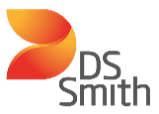
As part of the parternship between Sindup and AEGE, Rémy Botalla-Gambetta, Research and Innovation Project Manager at DS Smith describes market intelligence practice and particularly how the platform is used.
Firstly could you explain your market intelligence role within DS Smith ?

I have been working for DS Smith for the last two and a half years. DS Smith is a British company and one of the European leaders in packaging. I work on medium term innovation which includes a wide range of activities: project building, partner identification, project management and market intelligence. As part of my role I have structured market intelligence in the company in order to meet internal needs and requests. Firstly this meant competitive intelligence to follow key competitors and other companies in the sector, but also to follow key topics in the packaging sector such as the fight against single-use plastic and blockchain which will have a strong impact on our business. This intelligence initially helped us to pick up on emerging new competitors and identify partners, and was extended to sales intelligence and innovation. Thanks to the monitoring carried out we edit a newsletter with a content which is adapted to the expectations and needs of colleagues and helps us to give them very relevant content. To ensure that the information monitored and shared is even more relevant, we specifically picked out the colleagues who were interested by this type of service.
How exactly is market intelligence organised at DS Smith ?
From a hierarchical point of view market intelligence is in the marketing and innovation department. This is due to the fact that market intelligence is expected and evaluated through direct business. Form an operational point of view I carry out most market intelligence tasks myself and a colleague in the marketing department has a role as a curator and shares the information internally. He implemented an employee advocacy platform with Hootsuite Amplify which is connected to Sindup. Therefore the content whcih he thinks is relevant is pushed directly to the DS Smith sales team, which can also be published on social networks, internal articles or indeed articles which confirm messages which we are trying to advocate. There is also an internal use of market intelligence. Currently we have two monthly newsletter: one competitive and one sales which share articles detected in Sindup and we also intend to create a topic based newsletter every two months with a real editorial line and analysis. The goal is not only to share articles but to understand and contextualise the potential impacts on the fields which are of interest to us. Take for example the explosion of e-commerce, which has resulted in a 30% growth of our e-commerce volumes. If this growth continues it is important to ask the question of tomorrows challenges for e-commerce packaging: cold packaging, mailers. We have all received a parcel in a bad condition. So the key question, what is the business interest of our market intelligence ? It helps the sales person have a real role in advising the client.
Internally we talk a lot about the end of BtoB and BtoC as people are looking more and more for HtoH (human to human). Carrying out market intelligence for sales teams helps bring monthly information about clients to our sales teams and our product managers. It helps to create personal links with clients. There has been a very positive impact on client relations when the client realises that we truly understand their situation. Therefore we can say that our market intelligence has a real impact on improving the client relationship. Naturally sales managers and project managers really appreciate having this type of resource.
How does Sindup make the difference compared to other platforms ?
I have worked with Sindup over the last three and a half years, firstly when I worked in the marketing department of CEA, so there was a clear advantage, but we nevertheless carried out a benchmark since there was no existing market intelligence platform in our company. One of the candidates was very good, but far too complex and would have needed a person to work full-time, whereas I needed to create a project using only 15-20% of my time. The other solution was more expensive and considerably less flexible in terms of sourcing. It was not possible to create source bundles: the tool monitors one and a half million sources but it was not possible to select just thirty and add on additional ones, which would have allowed us to reduce the noise. Another negative point, there were not standard formats for sharing information, the tool simply found the articles, we would have needed to create the newsletters manually. Sindup was a good balance: precise, flexible, particularly for reducing noise with the source bundles, and will a true objective of sharing the analysis. Furthermore, I would like to add that Sindup has an excellent customer support team, with quick response time whenever we have a technical or commercial question.
The goal was not just to share articles but to understand their potential impoact on the fields which are of interest to us, the 'so what' ?
Rémy Botalla-Gambetta
Research and Innovation Project Manager
Pour finir, quels sont selon vous les défis de la veille ?
Dans beaucoup d’organisations, les équipes opérationnelles (vente et développement) ont intégré la veille, qui représente un outil de décision. En revanche, il est plus compliqué de faire émerger cette même appétence et de trouver des outils et une méthodologie pour faire de la veille un outil décisionnel auprès du comité de direction qui reste une cible encore difficile à atteindre et à convaincre. Nous réfléchissons donc avec Sindup à des nouveaux livrables qui seraient très « high level » et qui pourraient représenter un véritable outil décisionnel pour les membres du codir.

